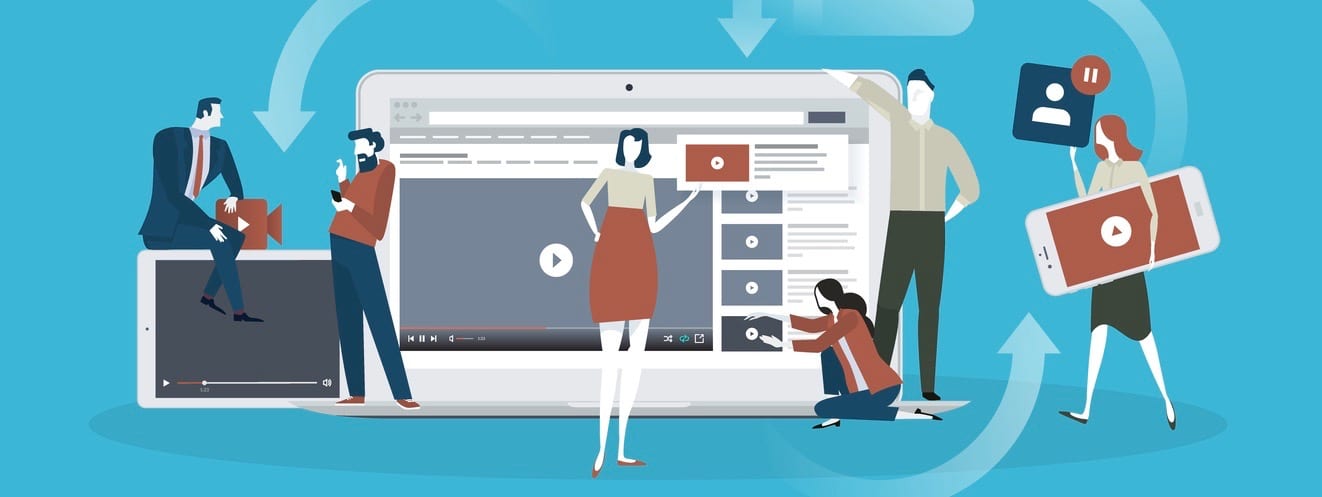While social media might be the obvious choice as the go-to channel for video, video can and should be utilized more broadly to support other outbound communications efforts because we live in a visual world now.
Forbes covered it and we’re living it—video content is a permanent fixture in the 2018 PR game. Here are five ways you can use video to improve the effectiveness of your communications program and increase return on investment:
1. Pitches
Where methodically prepared and heavily labored-over copy was once king in the pitching world, video is blazing a trail for new opportunities. Media companies, not just in broadcast but in other segments as well, such as Buzzfeed and Vice, are devoting whole sections of their sites to visual content in response to readers’ preferences changing.
This presents an opportunity that shouldn’t be ignored. Incorporating video content into pitches can help to decode complex topics, highlight potential impact or illustrate a coolness factor far better than words can. It can also make your pitch more likely to be pursued by journalists because you have taken care of the visual asset requirement for them.
What do you want? Awareness. What does a journalist want? Readers. Providing them with visual content enhances their articles and the social posts that support them, allowing for more click throughs. It’s a win-win!
2. Blogs
According to WordStream, “59 percent of executives agree that if both text and video are available on the same topic, they are more likely to choose video.” This affinity for video is driving many companies and influencers to incorporate more vlogging into their repertoire, with Cisco expecting it to represent at least 69 percent of web content from here on out.
Clearly, video content is growing in popularly and represents a great opportunity for businesses to connect and appeal to their prospective customers, as well as capture their attention and drive them back to a website to explore and learn more. Videos should be supplementary to blog posts, not direct copies of them in a visual format. As with pitches, video can be used to provide further depth on a concept that may be too confusing to imagine with text alone.
3. Email marketing
Regardless of the type of email campaign you’re sending, “using the word ‘video’ in the subject line boosts open rates by 19 percent and click-through rates by 65 percent.” Suitable for newsletters, announcements, or promotions, video has a place in driving eyeballs where marketers want them.
Because emails are sent to places external to the company (subscribers inboxes), using a tool that can encourage engagement, especially when it may drive viewers back to internal platforms (website or social channels) is an enormous benefit that increases ROI. Adding in social share buttons takes the video one step further.
One of the best ways to incorporate this ROI booster? Add a static image with a play button overlay that links to the video site. This can help avoid any loading errors or firewalls within various email platforms.
4. Website
When used on a landing page, “video content can increase conversions by 80 percent or more” according to Visually. This means that not only are viewers watching the video and absorbing your message, they are also taking the additional step to convert into a subscriber, follower or buyer.
There are a couple of different video types that are well-suited for a website platform. These include testimonials, product demonstrations, company profiles, vlogs or Facebook Live posts.
5. Speaking/exhibiting opportunities
Speaking and exhibiting opportunities are great ways for companies to reach other industry experts, journalists, and customers, both current and potential. However, at such events, there is often an overload of information coming from multiple competitors, all vying for attention.
According to Brain Rules, The New York Times bestseller by molecular biologist Dr. John Medina, when people hear information, they’re likely to remember 10 percent of that information three days later. However, if a relevant image is paired with that same information, people retain up to 65 percent of the information three days later. This means that including video in booths and sessions might not only encourage people to attend, but also keeps your company top of mind over others.
Questioning whether or not a video would actually enhance a session rather than simply take up time? Consider that a visual offers something for listeners to point back to after the session. This collateral can help continue the story even after the expo has ended. The best videos for speaking and exhibiting opportunities will be informational or educational and used to supplement discussion.
Combining all five of these ways to leverage video with social media doesn’t just interest readers, it actually brings greater value to some of the efforts that many companies already pursue. If you’re not leveraging video outside of social media, then you’re not taking full advantage of your brand’s assets. Leverage it or lose it!



